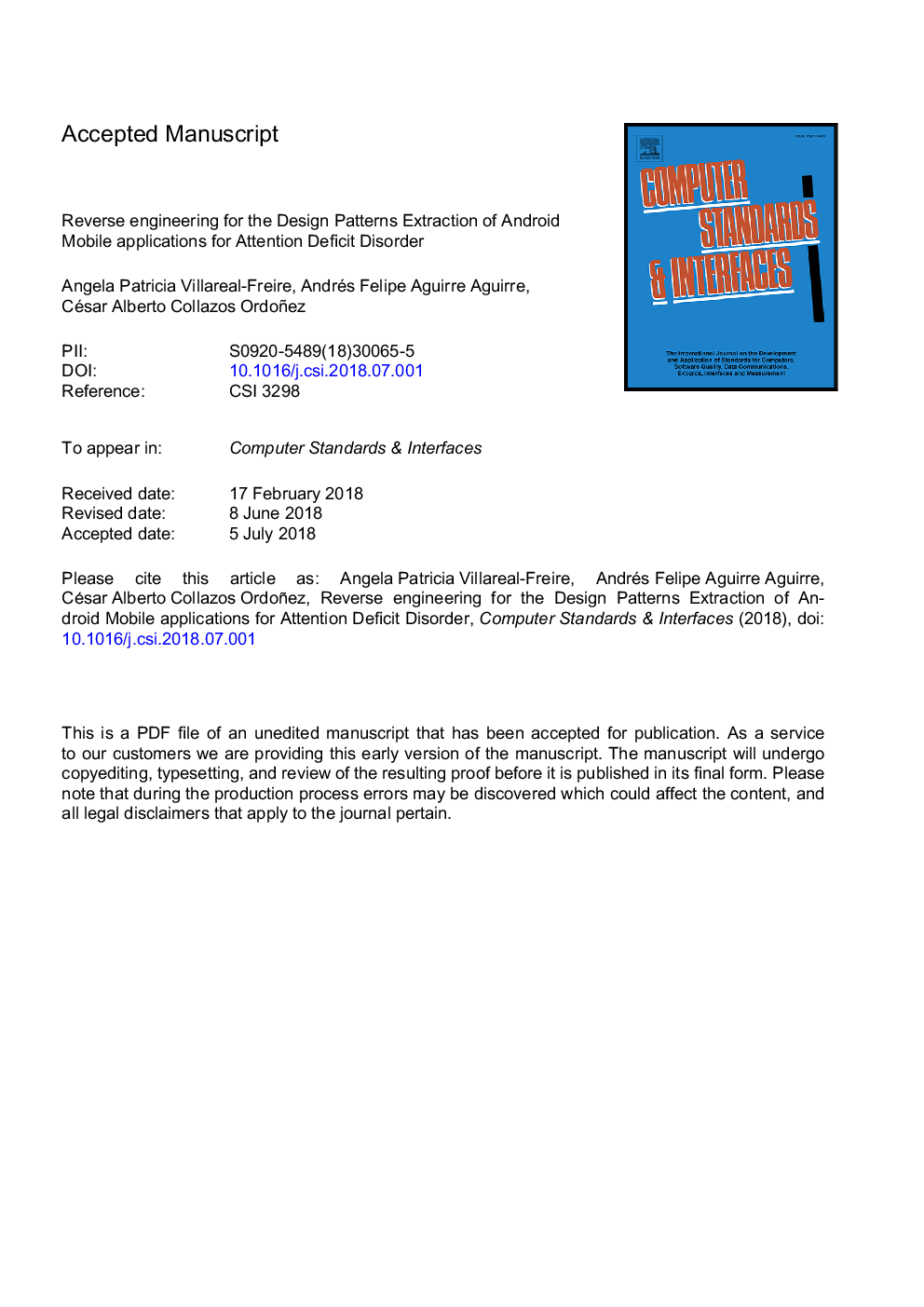| Article ID | Journal | Published Year | Pages | File Type |
|---|---|---|---|---|
| 9951457 | Computer Standards & Interfaces | 2019 | 28 Pages |
Abstract
The lack of guidelines that help to design interfaces for the treatment of attention deficit in children, has made it necessary to perform a reverse engineering process through which patterns can be extracted considering the review of existing Android mobile applications. However, this process is not simple. This paper presents the methodology for a reverse engineering process applied in Android applications that consists of 3 main steps: the selection of applications, the selection of patterns and the analysis of existing patterns in the selected applications. In the same way, some important contributions are presented, such as the selection of patterns and common characteristics found among the applications for the treatment of attention deficit like the use of the Call to Action Button pattern, the use of Tactile (tap), use of sounds and the use of static images.
Related Topics
Physical Sciences and Engineering
Computer Science
Computer Networks and Communications
Authors
Angela Patricia Villareal-Freire, Andrés Felipe Aguirre Aguirre, César Alberto Collazos Ordoñez,
